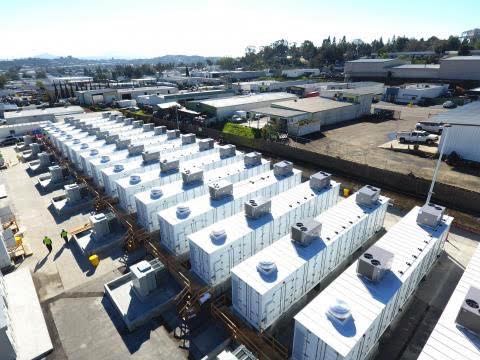Australia has been named among a handful of countries set to lead a global energy storage boom that will draw a massive $US1.2 trillion ($A1.66 trillion) in investment over the next 22 years, and slash the cost of batteries by half.
In its latest Long-Term Energy Storage Outlook, published Wednesday, Bloomberg New Energy Finance forecasts strong uptake of stationary energy storage, driven in equal parts by households trying to maximise solar self-generation, and networks working to balance increasingly renewable grids.
Mapping the course of the sector between 2018 and 2030, the outlook also sees the capital cost of utility-scale lithium-ion battery storage systems falling another 52 per cent over the 22-year period, thanks in large part to the simultaneous global boom in electric vehicles.
This “tumbling cost” – coming on top of steep declines over the past decade – will “transform the economic case for batteries in both the vehicle and the electricity sector,” the report says, growing the market to a cumulative 942GW/2,857GWh by 2040.
 “Cheap batteries mean that wind and solar will increasingly be able to run when the wind isn’t blowing and the sun isn’t shining,” the report says.
“Cheap batteries mean that wind and solar will increasingly be able to run when the wind isn’t blowing and the sun isn’t shining,” the report says.
“Storage becomes a practical alternative to new-build generation or network reinforcement, especially for underutilised assets in some markets.”
Behind-the-meter, batteries will also increasingly be used by millions of households, businesses and industrial premises, the report says, to shift demand, store excess solar, boost reliability, and to earn money for various grid services.
“We see energy storage growing to a point where it is equivalent to 7 per cent of the total installed power capacity globally in 2040,” said Logan Goldie-Scot, head of energy storage at BNEF.
“The majority of storage capacity will be utility-scale until the mid-2030s, when behind the meter applications overtake.”
Figure 4, below, shows this trend playing out. The report notes that aggregating behind-the-meter, or BTM energy storage could replace utility-scale for many applications, “but it will take years before regulatory frameworks in some countries fully allow this.”
 The report also points to the market for rural microgrids, which it notes is “almost non-existent today,” but could attract $38 billion in capital through 2030, as utilities discover that combining solar, diesel and batteries at isolated sites beats both grid extension or fossil-only generation on cost.
The report also points to the market for rural microgrids, which it notes is “almost non-existent today,” but could attract $38 billion in capital through 2030, as utilities discover that combining solar, diesel and batteries at isolated sites beats both grid extension or fossil-only generation on cost.
Meanwhile, demand for batteries for stationary energy storage will be dwarfed by demand from the electrical vehicle market, BloombergNEF says, which will more materially impact supply-demand balance and prices for metals including lithium and cobalt.
“We have become much more bullish about storage deployments since our last forecast a year ago,” said Yayoi Sekine, energy storage analyst for BloombergNEF and co-author of the report.
“This is partly due to faster-than-expected falls in storage system costs, and partly to a greater focus on two emerging applications for the technology – electric vehicle charging, and energy access in remote regions.”
Regionally, the report names Australia among the countries it expects to lead this boom, alongside China, the US, India, Japan, Germany, France, South Korea and the UK.
“These nine markets will represent two-thirds of the installed capacity by 2040. In the near-term, South Korea will dominate the market, the US will take over in the early 2020s, but will be overtaken by China in the 2020s. China will then lead throughout to 2040,” BloombergNEF says.
Developing countries, particularly in Africa, are also forecast to see rapid growth in battery storage – again, boosted by an increase in the amount of off-grid and edge-of-grid applications.










